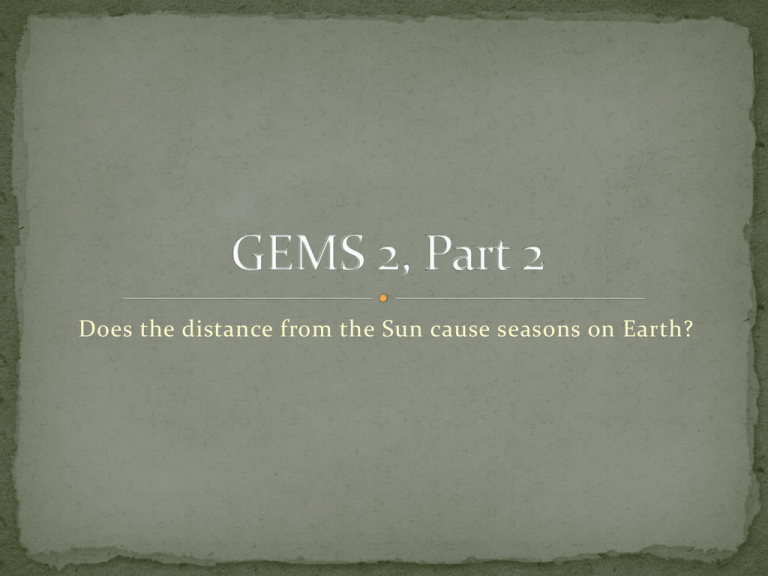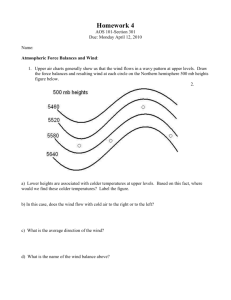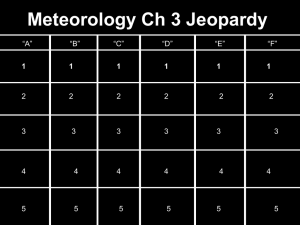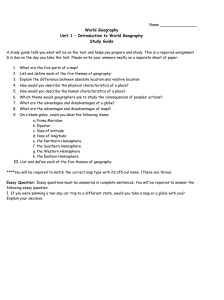The Moon
advertisement

Does the distance from the Sun cause seasons on Earth? Why do we have day and night on Earth? What is a time zone? We have day and night on Earth because Earth rotates on its axis once every 24 hours, placing the Earth in either dark or light for ½ the planet. Time zones are the slices the Earth is divided into based on Earth’s rotation. There are 24 time zones that are divided into 15 degrees each. 360 divided by 24 zones is 15 degrees. Discuss at your table. Is the orbit of Earth more of a circle or an oval? The orbit of Earth is distorted because of the way it is DRAWN or the angle observed and not how it actually is. (Show model) Earth is closest to the sun when it is winter in the Northern Hemisphere. What?!?! The distance from the Earth to the Sun doesn’t change much when compared to the distance from the Sun. The Earth is actually slightly closer to the Sun around January 2nd-5th. We are going to look at global temperatures for a year to see if we can find a cause for the seasons. Project GLOBE Students from around the globe measure temperature data at their location and share the data. The temperatures on the following data represent the average temps for the entire month, not just one day. Looking at a globe in class, where is the Northern Hemisphere? Where is Alaska? What hemisphere is Alaska located? Northern Space Science Sequence 6–8 © 2008 The Regents of the University of California Permission granted to purchaser to photocopy for classroom use. What patterns did you see in the data? Which months have the lowest average temperatures? December and January Which months have the highest average temperatures? July and August Looking at a globe in class, where is the Southern Hemisphere? Where is Antarctica? What hemisphere is Antarctica located? Southern Space Science Sequence 6–8 © 2008 The Regents of the University of California Permission granted to purchaser to photocopy for classroom use. What patterns did you see in the data? Which months have the lowest average temperatures? July and August Which months have the highest average temperatures? November and December Discuss at your table what you noticed about the two graphs. Alaska is at 58 degrees N latitude Antarctica is at 63 degrees S latitude They are both almost equal distance from each other on either side of the equator. Temperature patterns are different in the Northern and Southern Hemispheres. In the Southern hemisphere, the hottest months are Dec through Feb, while this is winter in the North. Where we live, what season is July? Summer In the Southern Hemisphere, what season is July? Winter What do you think a temperature graph for a place at the Equator would look like? Space Science Sequence 6–8 © 2008 The Regents of the University of California Permission granted to purchaser to photocopy for classroom use. Title: Temperatures around the world Write a summary about what you observed with the graphs in class today and temps at different locations at different times of year. We will now step into the hallway to see just how far Earth is from the Sun. In this model: 1 cm = 140,000 km Earth=1 mm Sun=10 cm As we saw in the hallway, the distance between them is HUGE, especially when compared to the sizes of the Earth and the Sun. The Earth would stay 10 m from the Sun at all times. The Earth is titled on its axis. The Unites States does tilt towards the Sun during the summer. Do you think the tilt makes the United States closer to the Sun? Do you think this makes a difference in our temperatures? Discuss. Think back to our model in the hallway. Does the tilt really make a difference in the vast space between Earth and the Sun? Yes, the tilt does make the US closer in the summer, but that difference is so small, it does not matter. The tilt is important though and we will look at that in the next few days. In your journals Cite evidence from what we just discussed about why the distance from the sun is not a factor in why we experience seasons. Use the temperature data from the charts and the scale model we looked at. Remember, we are scientists. We use scientific evidence. Scientific evidence is something that can be observed, tested and verified by scientists. A scientific explanation needs to be based on evidence. https://vimeo.com/139407849 Scale model of the solar system








